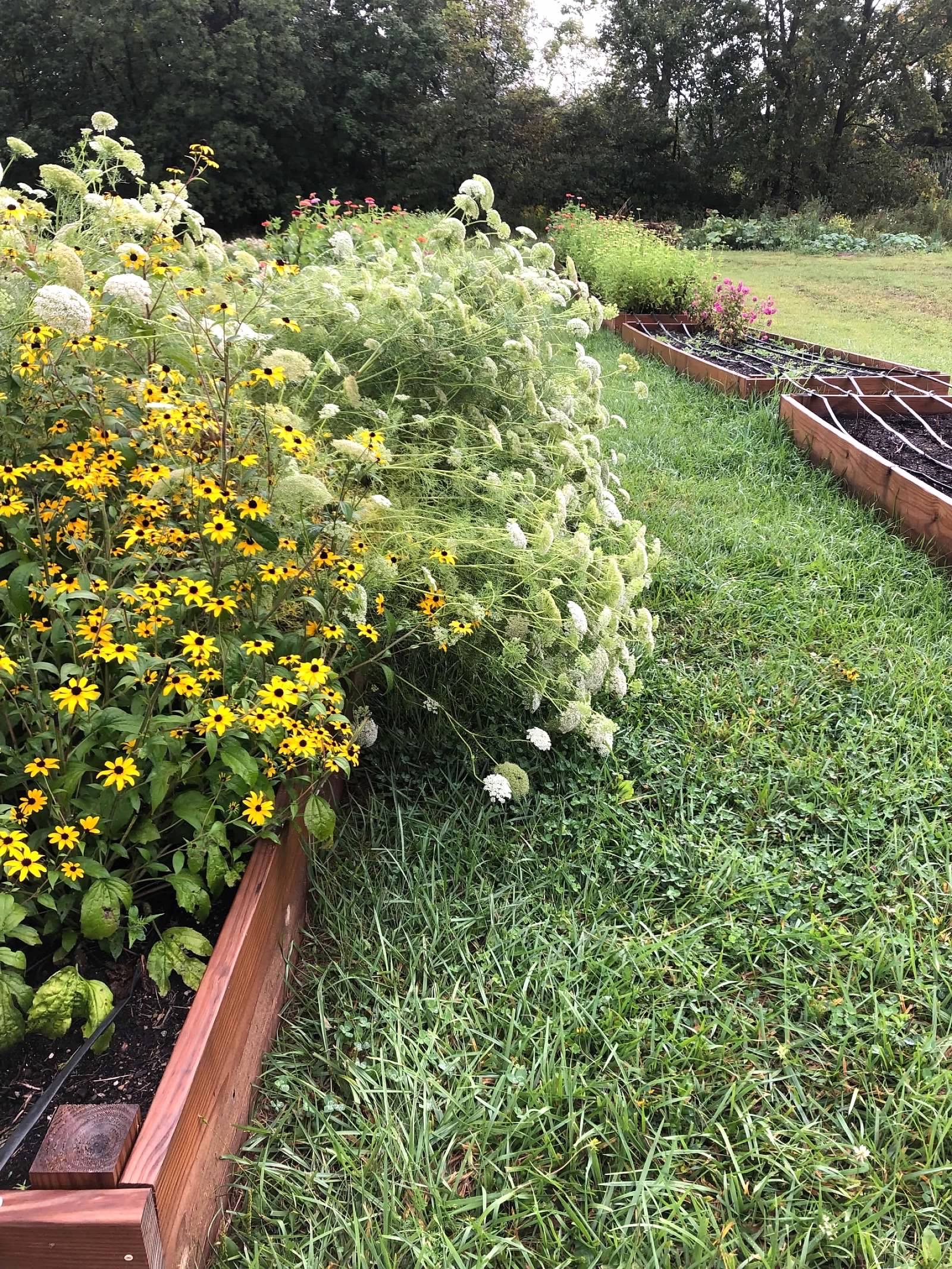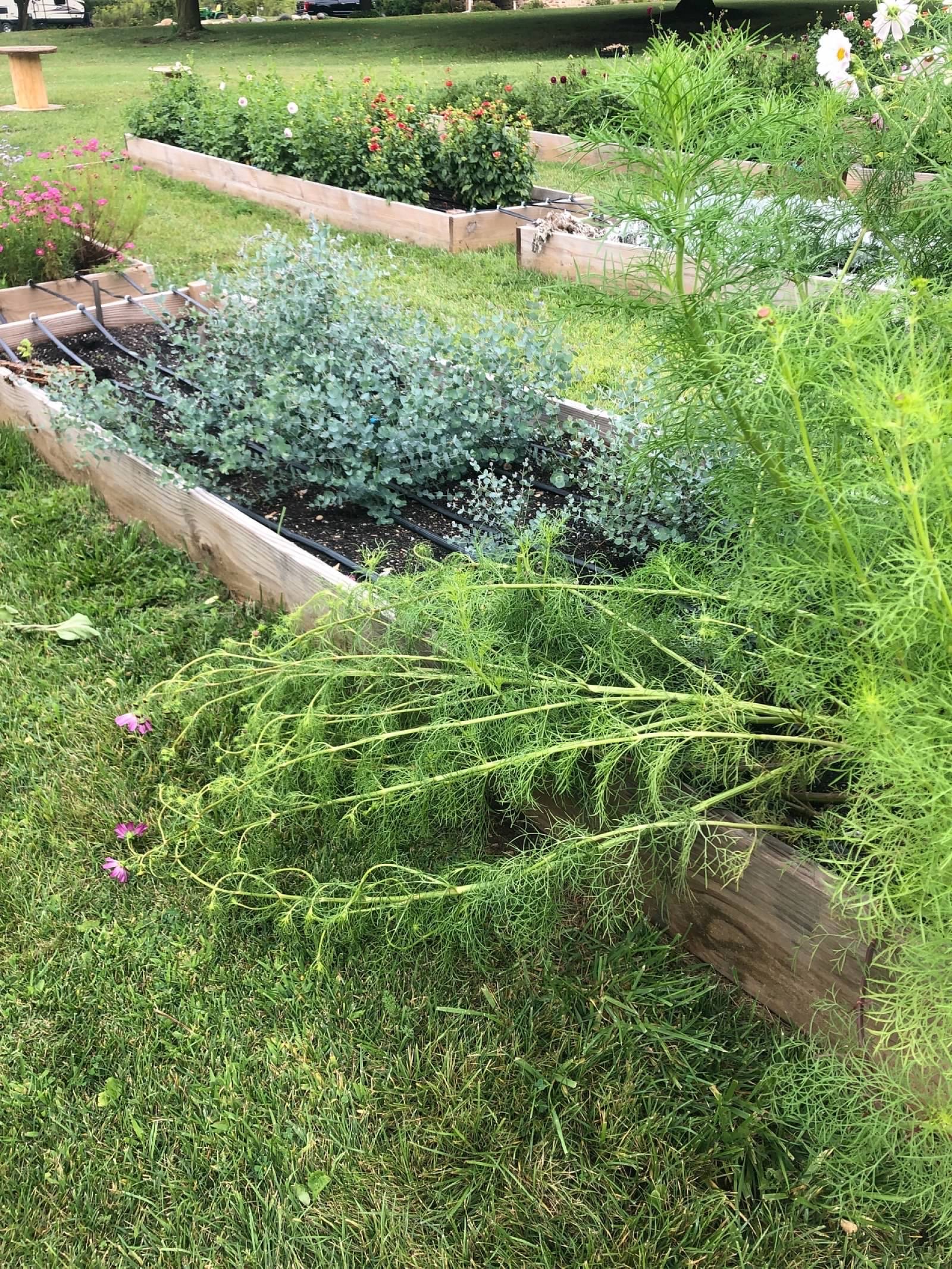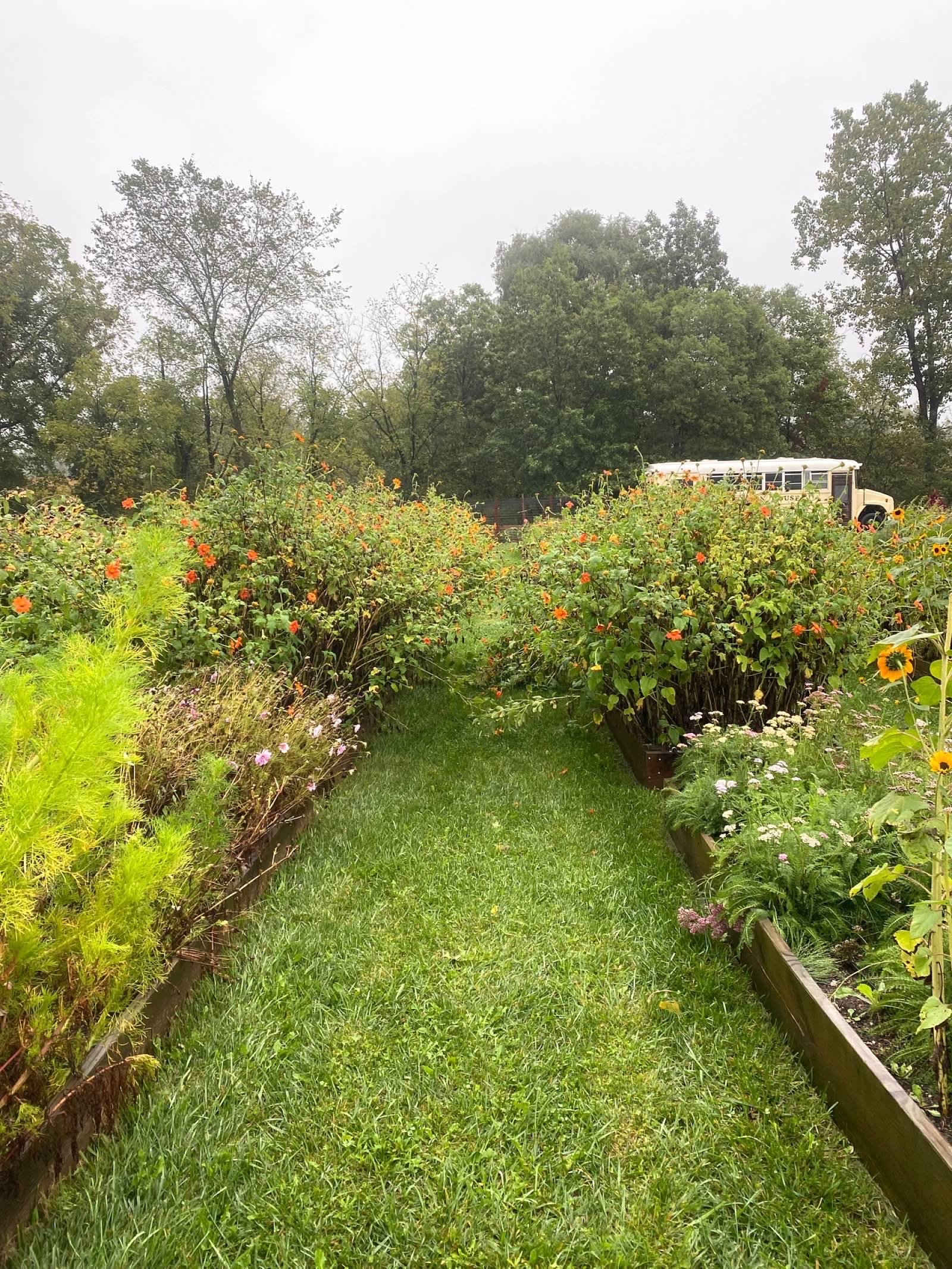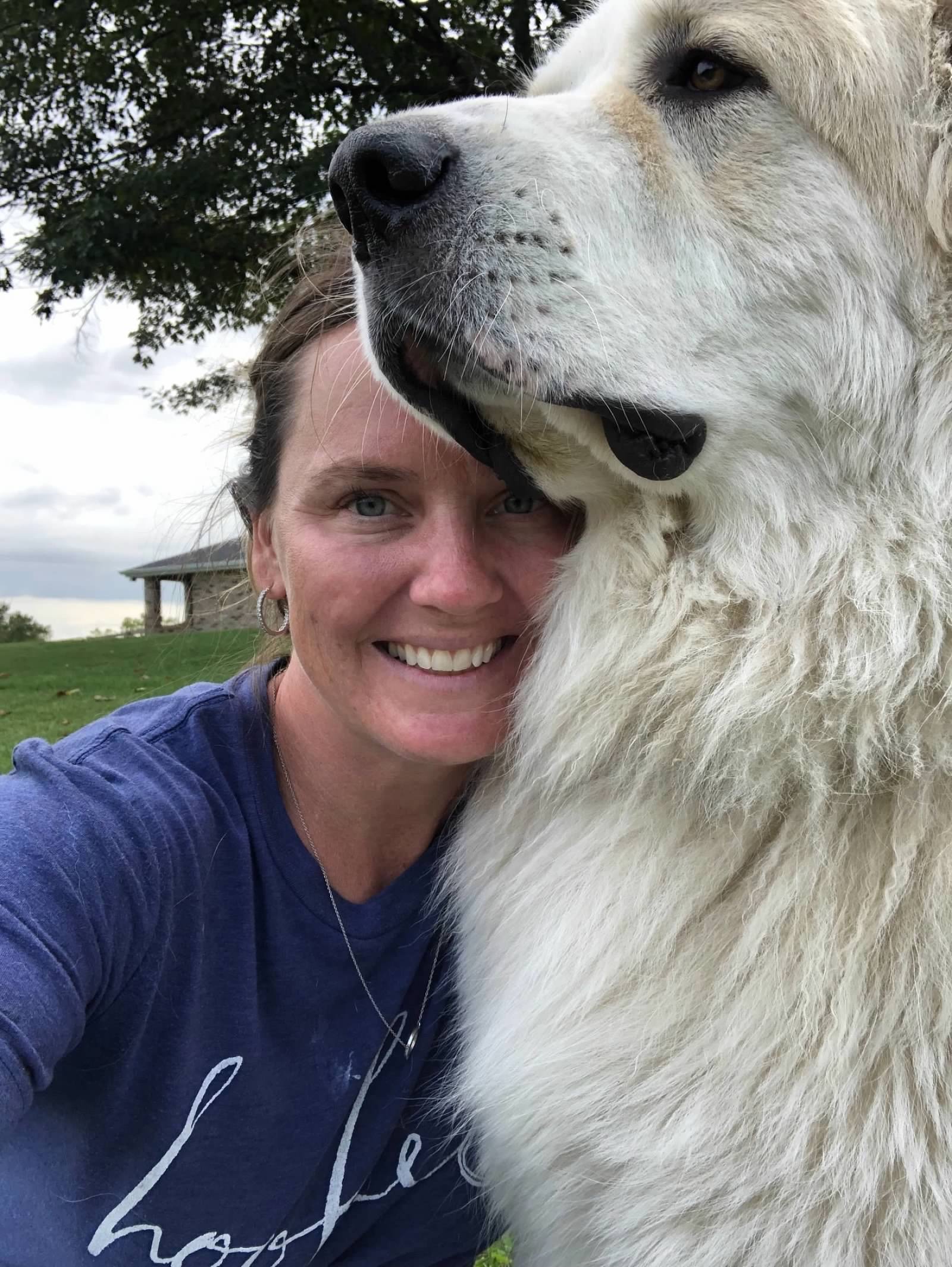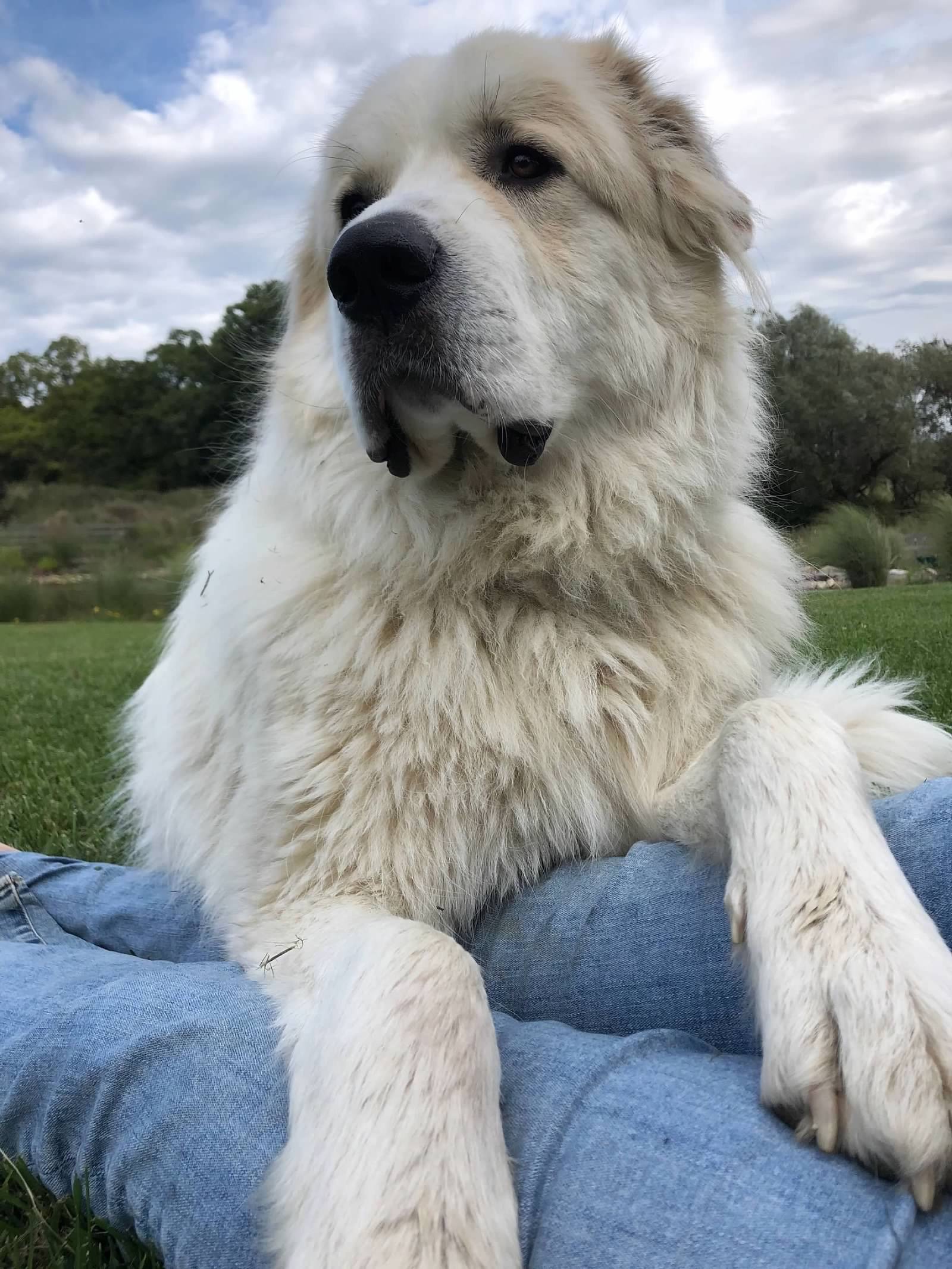Choosing the Right Location for Your Flower Field
Location, location, location!
Starting a cut-flower field is not as simple as picking a spot in your yard and converting the grass to soil. I wish it was!
Instead, you want to choose a location that sets your field up for success. In this article we will go over six key factors to consider when choosing the location for your field.
Sunlight
The majority of cut flowers require full sun which is defined as 6-8 hours of direct sunlight, but many varieties flourish with even more. Prior to selecting a location, track the sun over the course of a day and see where the shadows fall. And remember, if you’re doing your research in the spring or winter when the trees are bare, the amount of sunlight you see may be deceptive!
Water Source
Because water is essential to the success of your field, you’ll want to be near a water source.
Our annual field is just 20 yards from our home. This allowed me to run the irrigation from our house spigot in the beginning. We later had a spigot installed onto the flower shed next to our annual field, which is now the source of our irrigation. Our raised beds and hoop house are on the other side of our field. It’s not ideal but we’re able to irrigate these areas by combining multiple hoses. You should’ve seen the time I got the hose caught in our tiller! What a disaster.
We had water ran to our shed which is next to the annual field.
My goal is to have water ran to our hoop with a spigot so we can finally be rid of the 16 hoses strung together!
Proper Drainage
Plants can’t flourish in waterlogged soil so it’s essential to have adequate drainage. Did you know that your soil has pores? When it rains, water is stored in the pores. When the pores are full of water the soil is saturated and no more water can be absorbed, resulting in pooling.
When there is pooling, nothing good happens. Plants die because roots need air to survive, bulbs and corms rot and planted seeds wash away.
Often times you can spot trouble areas after a heavy rain just by looking for puddles. Does the rain collect at a low point? Does it remain for a long period of time? If so, consider leveling your field.
Protection from Wind
The wind was a factor I never took into consideration when selecting our location. And I’ve learned that when your field is in the middle of a wide-open space, the wind can wreak havoc. Think toppled plants, less growth, wind burn, and more. If your garden will be located in an open area, consider installing a wind break such as a hedge or slatted fence which can weaken its force. You can also install various styles of support in your garden to help weaker plants withstand high winds.
Protection from Wildlife
Dealing with wildlife comes with the territory of working in nature. I often have to remind myself that I’m in their habitat, they aren’t in mine! Whether you deal with bulb-devouring voles or petal-chomping rabbits, you must have a plan in place to prevent these devils from destroying your hard work.
Here at Muddy Acres, our main headache is deer. I would love to fence off our entire flower field to prevent these devils from devouring our tulip bulbs, but it’s simply not feasible.
In the spring I add a cage made from wire fencing to the top of our tulip beds. Once they start to bloom and I need to remove the cage, I put my dog Moose to work. He isn’t normally allowed in our front yard, but tulip season is an exception. For 1-2 weeks in May, I let him out before heading to bed and let him do his job.
I know everyone can’t home such a large dog, but they are incredible at doing their job! I can honestly say that Moose is 100% effective at keeping the deer away from the tulips…when he’s allowed on that part of the property!
Convenience
While convenience isn’t a necessity, it sure does help. And this makes sense, right? If your field is at the back corner of your 18-acre lot on the other side of a stream, it’s a pain in the booty to get there!
Our field is in our side and front yard. Because it’s right next to our home, it’s convenient. I can easily take nightly walks, run out to check on this or that, and grab that beautiful golden hour photo in the nick of time.
You never want to just pick a spot for your future garden or field. You want to put in time and effort to research, weigh the pros and cons for every possible location, and intentionally choose the one that will position your garden to thrive and produce incredible flowers.




